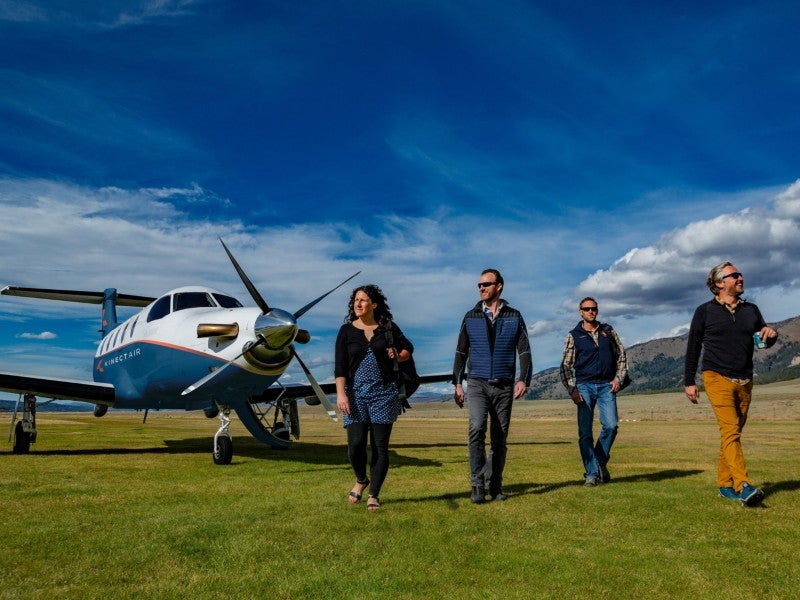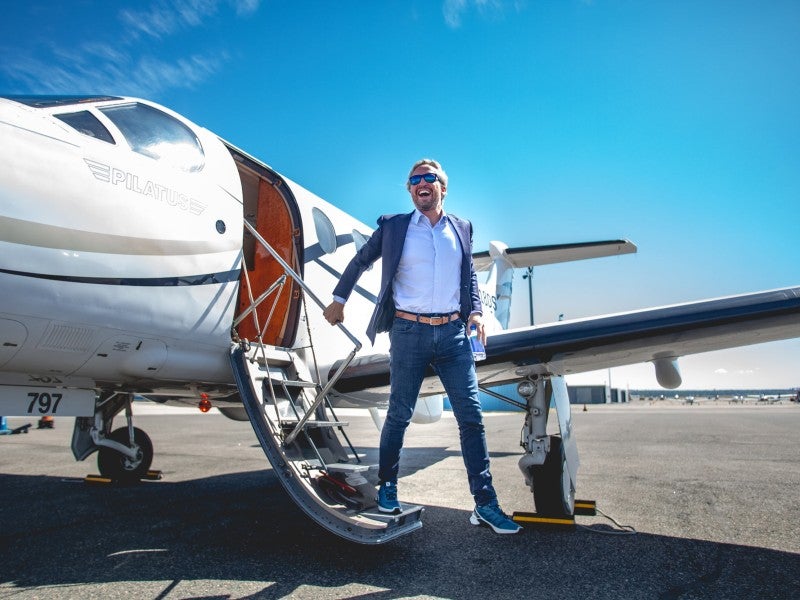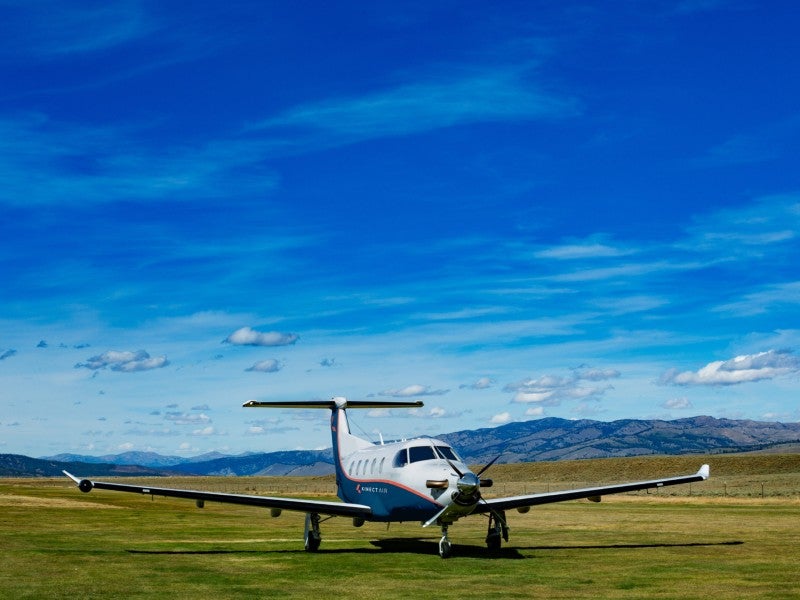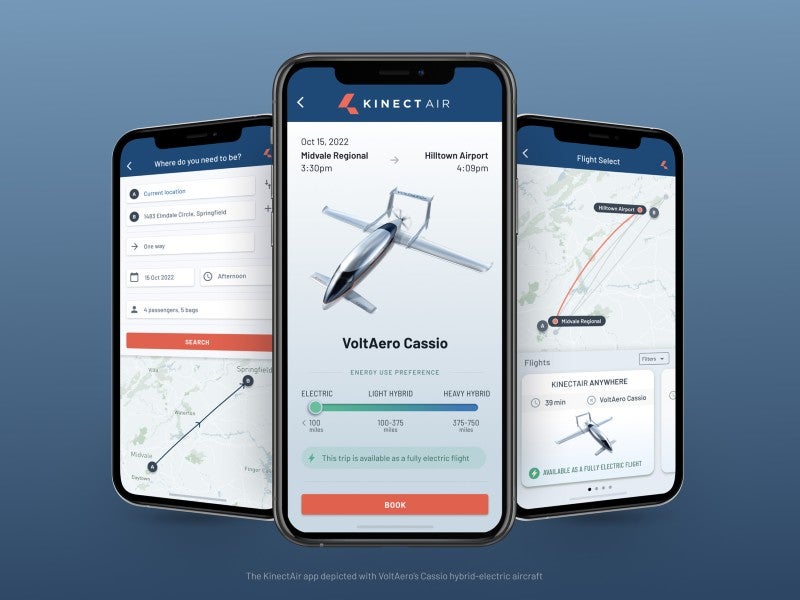
The concept of transport on demand is neither new nor original. From the age of carriages for the aristocracy to ride-hailing apps like Uber and Lyft, this has long been a trusted consumer model, capable of evolving with the times and including different transport modes, such as bicycles and trains. However, aside from for a handful of billionaires and politicians, air travel has never been on demand.
Newly launched American software aviation company KinectAir wants to change this paradigm; it wants to become the Uber of commercial aviation. Founded and launched by former US army and ambulance pilot Jonathan Evans, KinectAir is currently eyeing Europe and the US as potential launch pads for its flexible on-demand flight network.
The idea is to use the company’s fleet of leased and fractionally owned aircraft, some of which is also going to be hybrid electric, to transport people within a 1,000-mile radius. To facilitate this, KinectAir is currently developing an artificial intelligence (AI) driven app that will balance supply and demand for air travel and allow passengers to pick a preferred flight.
KinectAir is hoping to shine at a time when traditional commercial aviation is struggling to earn passengers’ trust due to the coronavirus pandemic and its often-criticised sustainability credentials. Evans and KinectAir want to resolve these issues by offering a less polluting and more efficient option for regional air travel.
Addressing key inefficiencies in aviation

As founder and CEO Evans explains, KinectAir’s starting point is that the ‘hub-and-spoke’ model that commercial aviation currently relies on is no longer giving the results it should. “There are enormous inefficiencies in commercial aviation, which requires us to show up two hours before the flight and [go through] hundreds of touchpoints, during a typical flight, with other people and surfaces,” he explains.
How well do you really know your competitors?
Access the most comprehensive Company Profiles on the market, powered by GlobalData. Save hours of research. Gain competitive edge.

Thank you!
Your download email will arrive shortly
Not ready to buy yet? Download a free sample
We are confident about the unique quality of our Company Profiles. However, we want you to make the most beneficial decision for your business, so we offer a free sample that you can download by submitting the below form
By GlobalDataHe believes that the solution to these issues lies in technology, specifically software that leverages the power of smartphones to access on-demand aircraft at an average rate of $0.60-$1/passenger-mile. “When you hold a ubiquitous supercomputer in your hands that is connected to the internet, aviation itself needs an information age upgrade as well,” states Evans.
“Using software as a platform allows enormous amounts of efficiency and it also allows us to bring a network fleet – a geographically distributed network – into the palm of everybody’s hand, on demand.”
KinectAir has created an AI-enabled app through which customers can book one of the company’s aircraft to fly regionally at the time they need. Similar to apps like HotelTonight that identify which hotel rooms are still vacant and advertise them at cheaper prices, the KinectAir algorithm can find potentially empty regional flights. According to the company, most private charters currently fly 40% empty and with only 2.6 passengers on average, but an AI-driven approach could change this.
“We’re able to do AI-driven demand generation for those empty legs,” he adds. “So any time an aircraft is scheduled to fly somewhere – as soon as an [A to B] flight is instantiated – immediately our engines start advertising to the community that [a B to A] flight that was going empty otherwise.”
Moving aircraft on demand away from being a luxury service

Highly efficient software is one of three main concepts KinectAir is deploying to appeal to future customers. “Only a very elite demographic – some 0.1% of the world – can currently afford to support a system that is extremely inefficient at moving on-demand aircraft,” says Evans. He believes that KinectAir’s fleet and crew can play a key role in boosting that demographic.
So far, the company has selected the four-seater Cirrus SR22, eight-seater Pilatus PC-12, the 80-seater Dash-8 and the nine-seater Piaggio Avanti to be part of its fleet. Earlier in June, it also entered a new partnership with French electric aircraft manufacturer VoltAero, which will deliver its Cassio hybrid-electric aircraft by 2022.
“These are the most efficient vehicles available to us today to take that software platform and specifically move people in the most efficient way from point A to point B in space,” he says. “Just choosing these aircraft is bringing an order of magnitude to our demographic – from 0.1% to 1% just on modelling.”
Another boost, he says, will come from the choice of flight crew. “Our pilots are former captains, we’re pulling them from British Airways and UPS,” he says. “And instead of hiding them behind a uniform and door and intercom, we’re personifying them and reintroducing them to our customers. Starting right from the app, once you book a flight you learn all about their experience and profile, and later sit next to them.”
Both Evans and KinectAir global head of communications Chris Rogers argue that Covid-19 might play into their branding. “The demographic of people looking to do this type of service is much younger, from 30 to 50,” says Rogers. “And the opportunity for those people, within the basis we will operate, to try this [service] or even forcibly needing to search for new opportunities to cover distance… that’s where we’re getting really excited by what the fallout of Covid-19 is.”
‘Democratising personal air mobility’ with fuel-efficient aircraft

Currently in the process of crowdfunding, KinectAir is also working on a second product – which will be part of the same app – called KinectAir Together. Similar to Uber’s ‘Pool’ option, KinectAir Together is a cheaper and more flexible option for passengers who don’t require time-sensitive trips.
“We’re going to use the same software platform, same app [and] same experience, but this is another product that you can choose and it asks you first where you need to go and when you need to be there,” says Evans. “This is where you can tell us how important the time that the flight [will take] is to you.”
If the time is not crucial, then passengers can book a seat on the Dash-8, an 80-seater twin turboprop that will serve regional point-to-point routes based on aggregated demand, particularly in the UK. He says the aircraft will be fitted to comply with the latest Covid-19 health and safety protocols.
More than anything, the concept behind this product is that the more flexible you are, the cheaper travelling is, but also the less polluting your trip will be: “You basically burn less gas and [it] costs less,” he asserts.
Sustainable flying is something that KinectAir strongly emphasises. Its recent partnership with VoltAero is a testament to that, as it aims to add the company’s Cassio hybrid-electric
aeroplane to KinectAir’s current fleet. “We’re partnering with hybrid and electric aircraft manufacturers that are designing aircraft for the information age,” he concludes. “We are talking 2022/2023, when the KinectAir fleet will include hybrid-electric aircraft.
“That will bring us into democratising personal air mobility.”







